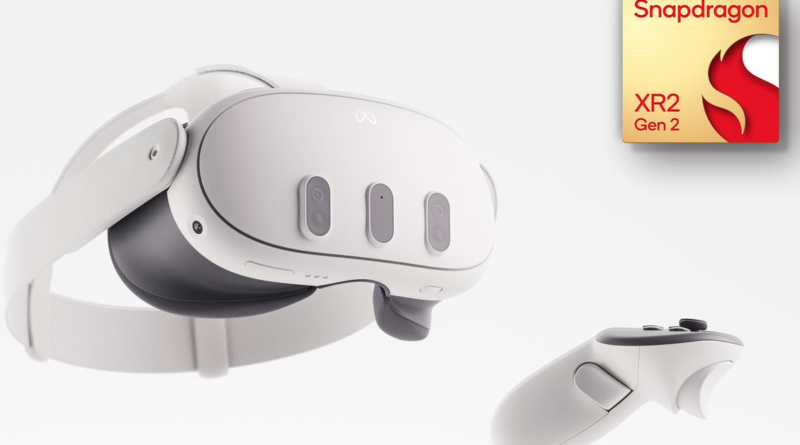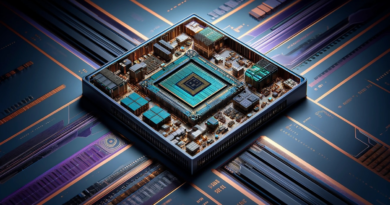Here are the Qualcomm chips that power Meta's Quest 3 and new Ray-Bans – The Verge
By Sean Hollister, a senior editor and founding member of The Verge who covers gadgets, games, and toys. He spent 15 years editing the likes of CNET, Gizmodo, and Engadget.
Meta has just fully revealed its Quest 3 virtual reality headset and announced its Ray-Ban Meta Smart Glasses, and they’ve both got Qualcomm silicon inside. There’s a new Snapdragon XR2 Gen 2 in the Quest 3 and a new Snapdragon AR1 Gen 1 in the Ray-Bans that boasts onboard AI.
We’ve known since the beginning that the Quest would feature a Snapdragon chip with double the GPU performance to drive its higher-res displays, but the Ray-Bans are a slight surprise — and so is the XR2 Gen 2’s baked-in hardware processing for head, hand, and object tracking.
Qualcomm VP Hugo Swart confirms it’s the first time feature detection and 6DoF tracking have been baked right into its VR headset chip. It lets headsets like the Quest 3 offload one of their “most intensive” tasks to dedicated silicon, constantly keeping you oriented in a 3D environment while cutting the power and latency by more than half.
Speaking of latency, Qualcomm says headsets can now offer full-color passthrough video with just 12-millisecond average latency — as fast as the custom R1 chip in Apple’s Vision Pro — though Qualcomm cautions that it depends on the resolution and speed of the rest of a device’s camera pipeline, and my colleague Adi Robertson kept her praise for the Quest 3’s passthrough fairly restrained in her hands-on.
With its own reference design headset, Qualcomm says it’s fast enough to play ping-pong.
Overall, Qualcomm is promising 2.5x GPU performance, 8x the AI performance, and 50 percent “better GPU power efficiency” from the new Gen 2 chip — but not necessarily all at the same time. “Our customers can choose,” says Swart.
Meta has seemingly chosen performance over battery life. Meta CTO Andrew Bosworth said in July that battery life would be “about the same” from the Quest 2 to the Quest 3, and Meta’s saying the same now. Meta will offer an optional battery strap for the Quest 3 that adds a couple extra hours of battery life, just like it did with the Quest 2.
As for the Ray-Bans, their Snapdragon AR1 Gen 1 is mostly about adding smartphone-grade photos, videos, and smarts to “light, sleek tethered glasses” with under one watt of power. Qualcomm says they can theoretically support dual displays of 1280 x 1280 per eye, 12-megapixel photos, and six-megapixel videos and could power turn-by-turn navigation, real-time translation, voice assistants, and hands-free search.
Practically, Meta’s new Ray-Bans will offer voice commands, 12-megapixel photos, 1080p30 video, and some basic spatial audio — no displays yet. Meta says the battery will last four to six hours of use on a charge.
Both chips are based on a 4nm process, compared to the XR2’s 7nm tech; both support Wi-Fi 7 as well as Bluetooth for connectivity. Unlike the sub-one-watt AR1 Gen 1, the XR2 Gen 2 is designed for devices with power budgets of over 10 watts.
Qualcomm wouldn’t comment on whether these chips cost a premium over their predecessors. Meta has a special multiyear deal with Qualcomm for customized headset chips, but Swart says these chips aren’t exclusive to Meta. “They have a natural advantage in having earlier access,” he told journalists. “I do think other products will come.” The previous XR2 Gen 1 wound up in headsets from HTC and Pico, in addition to the Meta Quest 2.
/ Sign up for Verge Deals to get deals on products we’ve tested sent to your inbox weekly.
The Verge is a vox media network
© 2024 Vox Media, LLC. All Rights Reserved

